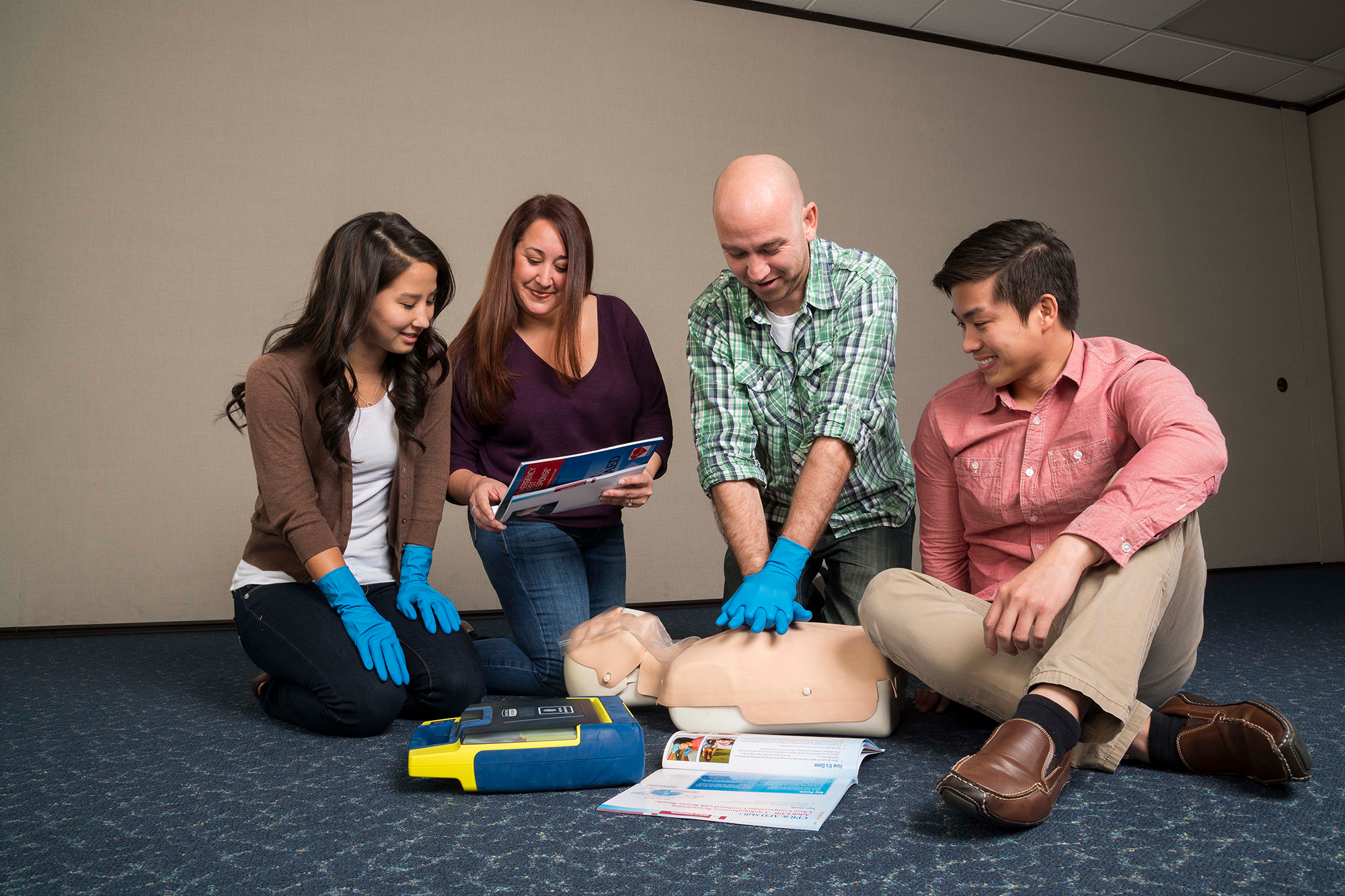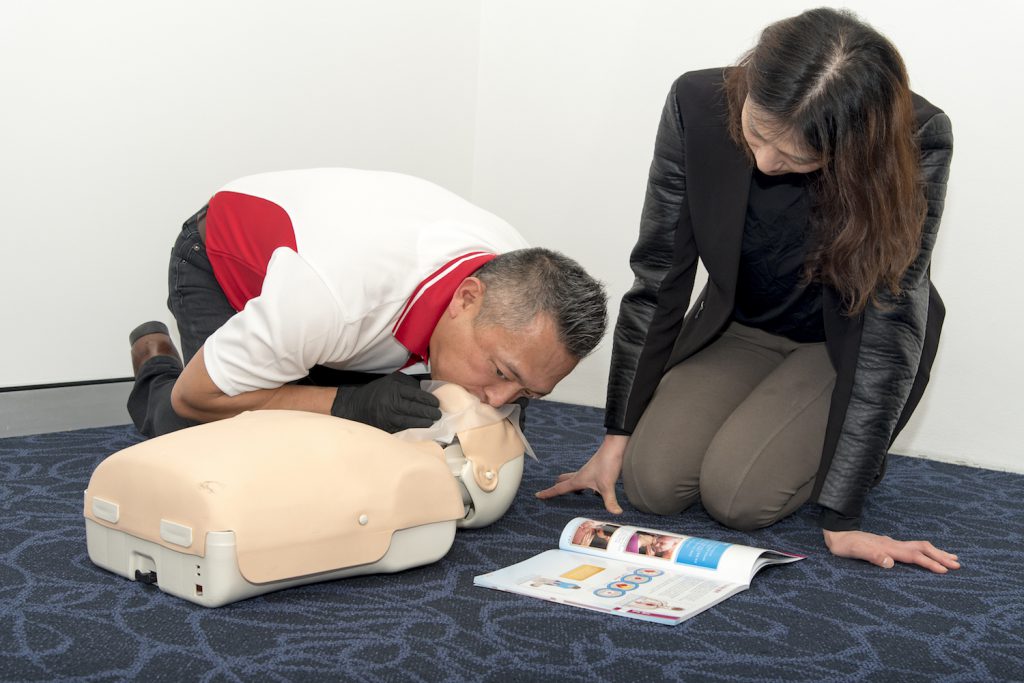Why consider a CPR certification course? Did you know that during cardiac arrest, the odds of survival decrease by 7% to 10% every minute, and the average response time for emergency personnel is 8 to 12 minutes? When CPR can be started right away, the patient’s chance for survival can double or even triple.* In a study reported by the National Institute of Health, survival rates for cardiac arrest were extremely low when bystander CPR was not administered.
70% of non-hospital cardiac arrests occur in the home. Is it time you looked into a CPR certification course? Or ask yourself this: Are you prepared to save the life of someone you love?
Most people know they need to have CPR training, but they aren’t sure how to choose a CPR certification class. To help you get prepared, we’ve answered some common questions below.
Most people only need a standard CPR certification, also known as “layperson CPR.” However, here are some specific examples when a different type of training may be recommended:
If you have young children, or look after them as part of your job, choose a course that includes CPR training for infants and children. If you have ready access to an Automated External Defibrillator (AED), you’ll want to be trained in the use of this life-saving piece of equipment. Some jobs (lifeguards, teachers, fitness instructors) also require a CPR certification and training in AED use. Ask your current or potential employer to confirm if you need this skill. Healthcare providers, such as EMTs, medical assistants, nurses, and paramedics, typically require more extensive CPR training. Look for courses with names like Basic Life Support (BLS) certification or a CPR Certification for Healthcare Providers.
The American Heart Association (AHA), Red Cross, Emergency First Response and other reputable CPR certification providers all adhere to the International Liaison Committee on Resuscitation (ILCOR) guidelines. ILCOR is an international organization made up of various resuscitation organizations from around the world, including the American Heart Association (AHA), the European Resuscitation Council (ERC) and the Resuscitation Council of Asia (RCA). The International Federation of Red Cross and Red Crescent Societies were also welcomed as a collaborating organization in 2023. ILCOR produced the first International CPR Guidelines in 2000.
When in doubt, check the training organization’s accreditations. For example, Emergency First Response CPR courses are accredited and approved by:
The American Council on Exercise (ACE) Cal/OSHA and Federal OSHA guidelines 29 CFR 1910.151 Scouts Association U.K. The US Coast Guard Australia Council for Teaching Swimming and Water Safety (AUSTSWIM) …and many others.Current guidelines recommend CPR providers receive training in providing rescue breathing. Most complete CPR classes include mouth-to-mouth training on a sanitized CPR mannequin.
Some people may feel uncomfortable learning this traditional form of CPR, but a few moments of unease are not a good reason to forgo training altogether. A CPR class also teaches you how to perform life-saving chest compressions.
If you have concerns about providing ventilations in a real emergency, you can forgo this step and offer continuous chest compressions. According to ILCOR, “Hands-Only CPR carried out by a bystander has been shown to be as effective as CPR with breaths in the first few minutes during an out-of-hospital sudden cardiac arrest for an adult victim.“
Beware of any CPR certification course with exclusively online training. It’s impossible to learn the skills you’ll need, and very few employers accept online-only CPR certifications. CPR is a physical skill, like learning to dribble a basketball, and it can only be learned with hands-on practice.
Look for a CPR training program that includes hands-on training with an instructor. In an EFR CPR course, you’ll practice on a specially-designed CPR training mannequin until you feel comfortable and confident of your skills.
Avoid being scammed. Learn more about why hands-on CPR training is important.
Determining the absolute best CPR certification course largely depends on your personal needs, circumstances, and willingness to engage in the training. In reality, the best CPR course is the one you sign up for and complete successfully.
Your schedule, location, and budget will play determining roles in the best certification for you. Whether it’s a local community center, a course offered by your workplace, or an online program, what matters is that you engage with the content and practice the skills.
Additionally, every CPR course, regardless of its structure or certification, covers the fundamental techniques and principles of CPR. All accredited courses provide the knowledge and skills needed to perform CPR effectively and increase the chances of survival during a cardiac emergency.
In the Emergency First Response Primary Care (CPR) course, you’ll learn how to respond to life-threatening emergencies. Using a combination of home-study and in-person training with realistic scenario practice, you’ll develop the confidence you need to provide care in an emergency situation.
In the Primary Care Course, you’ll learn the following skills:
Scene Assessment and Primary Assessment Barrier Use Cardiopulmonary Resuscitation (CPR) Serious Bleeding Management, Shock Management, Spinal Injury Management, Conscious and Unconscious Choking Management. Automated External Defibrillator (AED) Use Emergency Oxygen UseFor individuals who only need CPR or CPR/AED training, we offer the Emergency First Response CPR & AED course. This class teaches the basic principles of CPR and how to deploy and use an Automated External Defibrillation (AED) in an emergency. This course is also a popular choice for people who need CPR (re-)training.
*Source: American Heart Association
Share This
